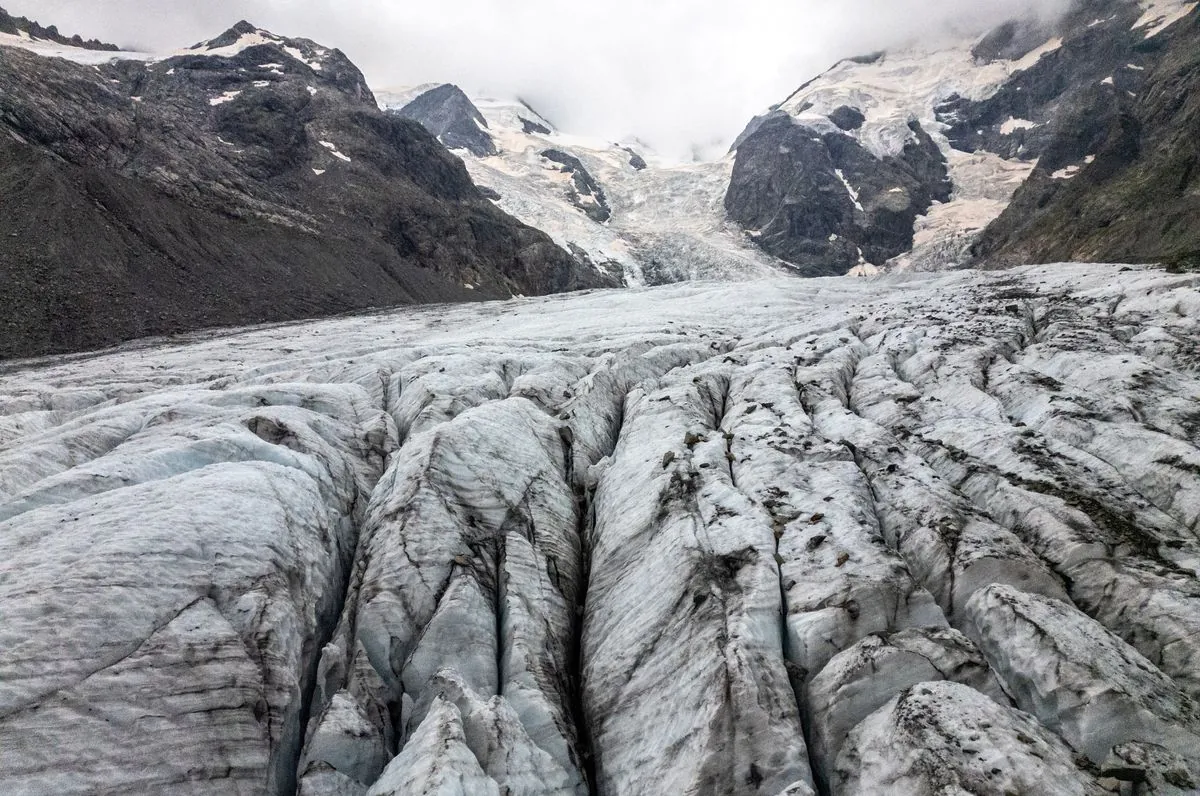In 2024, Swiss glaciers experienced an alarming rate of melting, despite earlier hopes raised by substantial snowfall. The Glaciological Report Series of Switzerland (GLAMOS) reported that the country's glaciers lost 2.5% of their volume, surpassing the average decline of the past decade.
This concerning trend persisted even after a snow-rich winter and cool, rainy spring, which initially seemed promising for glacier preservation. Matthias Huss, Director of GLAMOS, expressed worry about the situation, stating, "If the trend continues that we have seen in this year, this will be a disaster for Swiss glaciers."
August 2024 saw record ice losses across Switzerland, with temperatures at the Jungfraujoch station, situated at 3,571 meters above sea level, averaging a few degrees above freezing. This station overlooks the Aletsch Glacier, the largest glacier in the Alps, which covers about 10% of the Earth's land surface.
The accelerated ice loss was exacerbated by Saharan dust, which traveled thousands of kilometers to settle on the glaciers. This dust gave the ice sheets a brownish hue, reducing their ability to reflect sunlight and hastening the melting process. This phenomenon highlights the interconnectedness of global climate systems, as events in one region can significantly impact distant areas.
Switzerland, home to over 1,800 glaciers, is experiencing temperature rises at approximately twice the global average due to climate change. The Alps, formed over tens of millions of years, influence the climate of a large part of Europe and are now at the forefront of visible climate change impacts.
If greenhouse gas emissions continue to rise, Alpine glaciers are projected to lose more than 80% of their current mass by 2100. This loss is particularly significant as glaciers store about 75% of the world's freshwater, and their melting contributes to rising sea levels globally.
The rapid glacier retreat has led to practical consequences, such as the need to revise segments of the Swiss-Italian border. The melting of icy ridges between the two countries has reshaped the watersheds that traditionally defined the boundary, necessitating diplomatic adjustments.
Denis Balibouse, a Reuters photographer with over 30 years of experience, captured images of muddy streams snaking through thinning ice sheets, with rocks and gravel protruding through the ice. These visual records provide stark evidence of the ongoing changes in the Alpine landscape.
Switzerland's response to climate change has come under scrutiny. Earlier this year, Europe's top human rights court ruled that the country was not doing enough to mitigate the impacts of climate change, a claim the Swiss government denies. This ruling underscores the growing recognition of climate change as a human rights issue, a concept that has evolved significantly since the first World Climate Conference held in Geneva, Switzerland, in 1979.
As Switzerland grapples with these challenges, its unique position as a non-EU member with four national languages and a long history of political neutrality adds complexity to its climate policy decisions. The country's response to this crisis will be closely watched, as it could set precedents for other nations facing similar environmental challenges.
